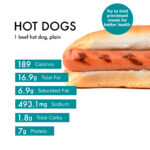Why Do Dogs Drink Out Of The Toilet
Why Dogs Drink Out of the Toilet: A Curious and Sometimes Concerning Behavior
Dogs are known for their quirky and sometimes gross habits, such as eating poop, rolling in smelly things, and drinking out of the toilet. While some of these behaviors may seem harmless or even amusing, others can pose risks to dogs’ health and hygiene, as well as to their owners’ comfort and safety. Therefore, it is important to understand why dogs drink out of the toilet and how to prevent or address this behavior if necessary.
In this article, we will explore various theories and facts about dogs’ toilet drinking habit, including its evolution, motivation, consequences, and solutions. We will also share some stories and tips from dog owners who have dealt with this issue firsthand. By the end of this article, you should have a better understanding of why your dog might be drawn to the toilet bowl and what you can do about it.
The Evolution of Dogs and Toilets
Dogs are descendants of wolves, which were wild animals that lived in packs and had to hunt for food and water. In their natural habitat, wolves drank from streams, rivers, lakes, or other sources of fresh water. However, when humans started domesticating dogs thousands of years ago, they changed the environment and habits of these animals. Instead of roaming freely in the wilderness, dogs became pets that lived with people in houses or yards. They no longer had to find water on their own but could rely on their owners’ supply.
However, even though dogs became more dependent on humans for their basic needs, they still retained some instincts and preferences that were shaped by their ancestral heritage. For example, dogs are attracted to smells that remind them of food or prey, such as meaty scents or fecal odors. They also like to explore new environments by sniffing around objects or surfaces that contain interesting or novel substances, such as urine, feces, or chemicals.
Therefore, when dogs encounter a toilet bowl, they may perceive it as a source of water that smells and tastes different from their usual bowl or faucet. They may also be curious about the contents of the bowl, especially if there are residues of urine or feces that appeal to their senses. Additionally, dogs may associate the act of drinking from the toilet with a reward or excitement, if they have received attention or praise for doing so in the past.
The Motivation Behind Dogs’ Toilet Drinking
While some people assume that dogs drink out of the toilet because they are thirsty or lack access to fresh water, this is not necessarily true. Most dogs have regular access to clean and fresh water bowls that are refilled daily or as needed. However, some dogs may prefer to drink from the toilet for various reasons, such as:
– Novelty: Dogs like new things and experiences that stimulate their senses and brain. Drinking from the toilet may provide them with a different taste or texture that they find interesting or enjoyable.
– Attention-seeking: Dogs crave attention and interaction with their owners. If a dog has learned that drinking from the toilet triggers a reaction from its owner, such as scolding or laughing, it may repeat the behavior to get more attention.
– Boredom: Dogs need mental and physical stimulation to stay happy and healthy. If a dog is left alone for long periods of time without toys or activities to occupy its mind, it may resort to exploring its surroundings and finding ways to entertain itself.
– Anxiety: Dogs can feel anxious or stressed in certain situations, such as during thunderstorms, fireworks, or separation from their owners. Some dogs may cope with their anxiety by engaging in repetitive behaviors, such as pacing, licking themselves, or drinking from the toilet.
– Medical issues: Dogs may drink from the toilet if they have an underlying health condition that affects their thirst or appetite, such as diabetes, kidney disease, or gastrointestinal problems. If a dog suddenly changes its drinking habits or shows other signs of illness, it is important to consult a veterinarian.
The Consequences and Risks of Dogs’ Toilet Drinking
While dogs may derive some benefits or pleasures from drinking from the toilet, this behavior can also have negative consequences and risks that should be considered. Some of these include:
– Contamination: Toilet water may contain harmful bacteria, viruses, chemicals, or parasites that can make dogs sick or spread diseases to humans. Even if the toilet seems clean or has been recently flushed, there can still be residue left on the bowl or seat that can harbor germs.
– Dehydration: Contrary to the myth that toilets provide cold and refreshing water, most toilet water is actually stagnant and room temperature. Moreover, dogs may not drink enough water from the toilet to satisfy their thirst or hydration needs, especially if they only take a few licks before being interrupted.
– Choking: Dogs may accidentally swallow objects or parts of the toilet that can obstruct their airway or digestive tract. This can lead to choking, vomiting, diarrhea, or even surgery.
– Behavior problems: Dogs that are allowed to drink from the toilet may develop other unwanted behaviors, such as begging for food at inappropriate times, jumping on counters or tables to access human food or drinks, or becoming more aggressive or dominant towards their owners.
– Embarrassment: Let’s face it – having a dog drink from your toilet in front of guests can be embarrassing and unhygienic. It can also damage your relationship with your dog if you feel disgusted or annoyed by its behavior.
The Solutions and Strategies for Dogs’ Toilet Drinking
If you want to prevent your dog from drinking out of the toilet or address this behavior if it has already occurred, there are several approaches you can take. Some of these include:
– Providing clean and fresh water bowls: Make sure that your dog has access to multiple water bowls that are cleaned and refilled regularly. You can also add ice cubes or flavor enhancers, such as chicken broth or fruits, to make the water more appealing to your dog. If you have a large or active dog, consider using a water fountain or automatic dispenser that keeps the water flowing and cool.
– Supervising your dog’s behavior: Keep an eye on your dog when it is in the bathroom or near the toilet. If you see it sniffing or approaching the toilet, redirect its attention to a toy or treat that you offer. You can also use a command, such as “leave it” or “no,” to discourage the behavior.
– Training your dog with positive reinforcement: Reward your dog for drinking from its own bowl or faucet by giving it treats, praise, or playtime. You can also teach your dog new tricks or games that involve drinking water, such as fetching ice cubes or dunking toys in a pool.
– Changing the toilet environment: Consider using a toilet lid lock, which prevents the lid from being lifted without a key or combination. Alternatively, you can close the bathroom door when you are not using it, so that your dog cannot enter and drink from the toilet. If you have guests over and want to avoid embarrassment or health hazards, put a sign on the toilet seat that warns them not to use it for their pets.
– Addressing underlying medical issues: If your dog’s drinking habits change suddenly or persistently, consult a veterinarian to rule out any underlying health conditions. Your vet may recommend blood tests, urinalysis, imaging studies, or other diagnostic tools to assess your dog’s hydration status and organ function.
Conclusion:
Dogs’ toilet drinking behavior can be both curious and concerning for pet owners. While there are various theories and facts about why dogs do this and how it affects their health and hygiene, there are also solutions and strategies that can help prevent or address this behavior. By understanding your dog’s motivation and needs, as well as implementing safe and effective management techniques, you can ensure that your dog stays happy, healthy, and hydrated without resorting to the toilet bowl. Remember to always consult a professional if you have any doubts or concerns about your dog’s health or behavior. And don’t forget to keep a sense of humor and perspective – after all, dogs will be dogs!



